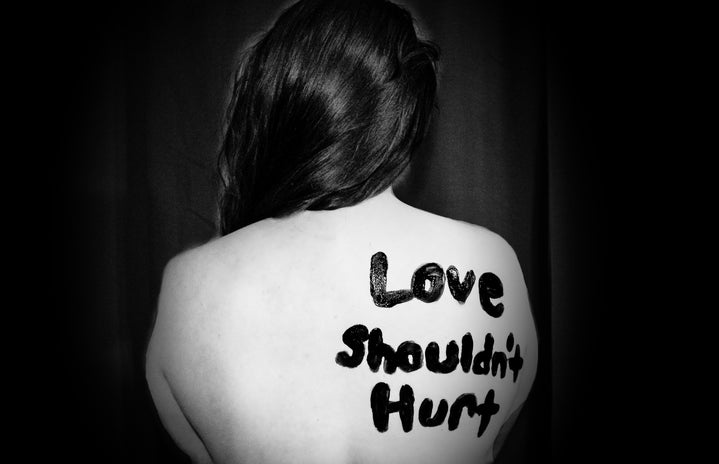A REVIEW OF ‘MEN WHO HATE WOMEN’
Who runs the world? Extreme misogyny.
Recently, I have been on a nonfiction book kick compared to my usual digestion of fiction books. As one does, I often turn to the internet and Goodreads reviews to see if a book is worth my time. Through a slideshow of non-fiction book recs on TikTok, I recently found the book Men Who Hate Women by Laura Bates. I was curious as I knew how deep the patriarchy and loathing of women ran in our society, but it wasn’t until I read the book that I found a new layer of awareness within myself.
Now, once I started this book I couldn’t put it down. It opened with the cruel reality of our world and the treatment of women. Where we are told to make excuses for men, where women have to learn that men are “all like that” or the famous phrase “boys will be boys,” and yet no agency is allotted to women who bear the brunt of this violence from men. Where we have learned to fear men and run the risk of offending them simply because it’s “not all men” although every man is complicit regardless even if they have a friend who beats women because they would never do it to him.
We live in a world where it’s okay for men to be violent toward women—whether they be his girlfriend, wife, friend, or simply a stranger—because not all men are like that and not all men hate women. But if we as women talk about patriarchy, masculinity, or male privilege then we’re immediately counterattacked by those who believe that any conversations about masculinity are an immediate attack on men themselves.
Laura Bates said it best herself, writing, “Those who speak of “toxic masculinity” are not criticizing men but rather defending them: describing an ideology and a system that pressures boys and men in our societies, in our families, to conform to unrealistic, unhealthy, and unsustainable ideals.”
The core subject of this book is “The Manosphere.” This is a vile group of men who get together (mainly on the internet) and systematically hate women and feminism. They seemingly enjoy sending women threats/death threats whenever something doesn’t go their particular way, or, woe betide, a woman receives some recognition for something positive that they did in this world. She does a great job of describing the online radicalization process of vulnerable young boys and men in these sexist and violent spaces.
These men believe that women are placed here to fulfill men’s sexual fantasies, with or without their consent. Shockingly, on these internet group sites, there are even tips on how to go about doing this. Bates discusses a group called “Incels’ which are men that are apparently denied sex by women, but not due to their faults of course, and therefore they are classed as involuntarily celibate. These men rage a personal war on women, that goes much deeper than the odd sexist remark here and there. This is hatred, in its purest and darkest form.
Bates writes well about holding two truths at once, a) that a lot, or at least some of these men on these forums and such feel insecure and defeated in life through circumstances not of their own doing (e.g., the man she writes about who was abused as a child and has physical scarring due to his parents’ mistreatment) and b) misogyny and violence are not appropriate ways to cope with those feelings. Most men simply reject the idea and cannot stomach that they created this system. This social construct has been a way of life since the dawn of time – the idea that men and women are so fundamentally different in every aspect that now when women do/get things that men have had for centuries, while subsequently whining and crying how unfair life is and how women run everything.
This book is divided into 10 chapters which describe the type of men—ranging from incels to pickup artists. With the rise of the internet, these alt-right communities are written off as harmless and “an internet thing,” even though it has very real effects and consequences. In chapter 6, titled ‘Men Who Hurt Women’ Bates describes a multitude of mass shootings that all perpetrators have in common—their shared hatred of women and how they need to be wiped out for the world to go back to how it used to be.
All of the shootings she describes did not consider or take into account that these men often left behind manifestos as their message to the world after taking their own lives. Most of the internet gave humaneness to these perpetrators, almost always blaming women in the process. This gave me an insight into how ingrained hatred of women is in all aspects of our society. Most of the media’s claims of these perpetrators being outsiders and having no access to mental health resources undermine the true reason and nature of this violence against women.
The extremists find reinforcement on the internet. When we lived in small communities where we knew a bit about many of our neighbors, we knew who held these kinds of views, and they didn’t receive much (if any) approval. Now, you can live next door to someone who secretly hates you and not be aware of it. The scary part is the high profiles of the haters exist on platforms like YouTube, Instagram, and Twitter where they can easily access teens, thus getting a new generation of men indoctrinated early. Make no mistake, this is radicalization. If the leaders of this movement were not white, this would have a completely different reaction.
It doesn’t help that politicians (still largely men) find misogynistic and xenophobic messaging works for them. The media is reluctant to admit that white supremacy is closely linked to male supremacist ideology while there are academics and some women who seem to be happy to give extremist views a pseudo-reputable aura.
It’s no surprise that most of these incels a part of the alt-right community as it’s referred to are majority white, heterosexual men who believe that men should be the sole provider of the house and that women have become too powerful because they have jobs (especially in fields like STEM, where women are still ridiculed to this day). Their white supremacist ideals mixed with Judeo-Christian talking points and their pseudoscience cherry-picked sources that make their beliefs so fake it’s laughable; it sounds so ridiculous that they genuinely believe that women rule the world when it couldn’t be further from the truth.
Although this book doesn’t go into feminist literature it is rather a great general guide into how the patriarchy is tightly woven into our daily lives and how the world seems to excuse men’s violence as the typical “boys will be boys” mentality. I will warn that there are very heavy topics in the chapters but it is necessary to show the violence, especially in the media where it’s most evil, under the guise of “satire” and how most of the tech space allows this to happen because they ultimately believe in this ideology as well.
As a society, we (people of all genders, though especially men) need to take the threats of incels and similar populations seriously. They’re not just a “fringe group.” Rather, their beliefs have permeated and affected women across multiple domains of contemporary life and have led to sexual assault, mass shootings, and other forms of terrifying violence. If you want to pick up a nonfiction book that’s easy to read and understand the basics of how our world operates around the violence of women, then I guarantee you will enjoy this book.


